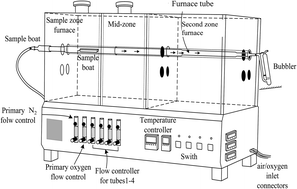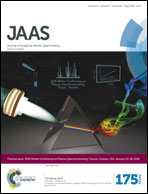Determination of ultra-low level 129I in vegetation using pyrolysis for iodine separation and accelerator mass spectrometry measurements
Abstract
Radioactive isotopes of iodine are the most common radiological toxins from nuclear accidents due to their high release and high enrichment in human thyroid. Among the radioactive isotopes, long-lived 129I can not only be used for the estimation of the radioactive risk of short-lived radioactive isotopes of iodine to humans and ecosystems, but also for the investigation of the biogeochemical cycle and environmental behavior of iodine. Accurate determination of 129I in various environmental and biological samples is the key issue for these purposes. Due to its beta decay, low specific activity and ultra-low concentration in normal environmental and biological samples, it is important to efficiently separate iodine from the sample matrix and sensitively measure 129I. However, the complicated chemical properties of iodine and high organic content in biological samples make efficient separation of iodine very difficult using conventional acid digestion and alkaline ashing methods. By optimizing the key parameters related to the separation of iodine by pyrolysis using a tube furnace, including carbonization temperature, heating protocol, combustion assisting gas, iodine volatilization process and iodine trapping, a safe, robust and reliable pyrolysis method was established for the separation of trace amounts of iodine from biological samples with a recovery of more than 80%. By further separation of iodine, preparation of sample targets, and measurement of 129I using AMS, a highly efficient and sensitive method for the determination of ultra-low level 129I in biological samples was developed. With this method, a detection limit of 6 × 10−17 g g−1 (or 0.4 nBq g−1) for 129I was obtained. Compared with conventional methods, this method is easy to operate, provides highly efficient recovery of iodine, and has simple processing and less cross contamination. 5 different species of vegetation were analyzed using both the developed method and the conventional alkaline ashing method for sample decomposition, and the results agree very well with each other. The method has been successfully used for the determination of 129I in a large number of vegetation samples.


 Please wait while we load your content...
Please wait while we load your content...